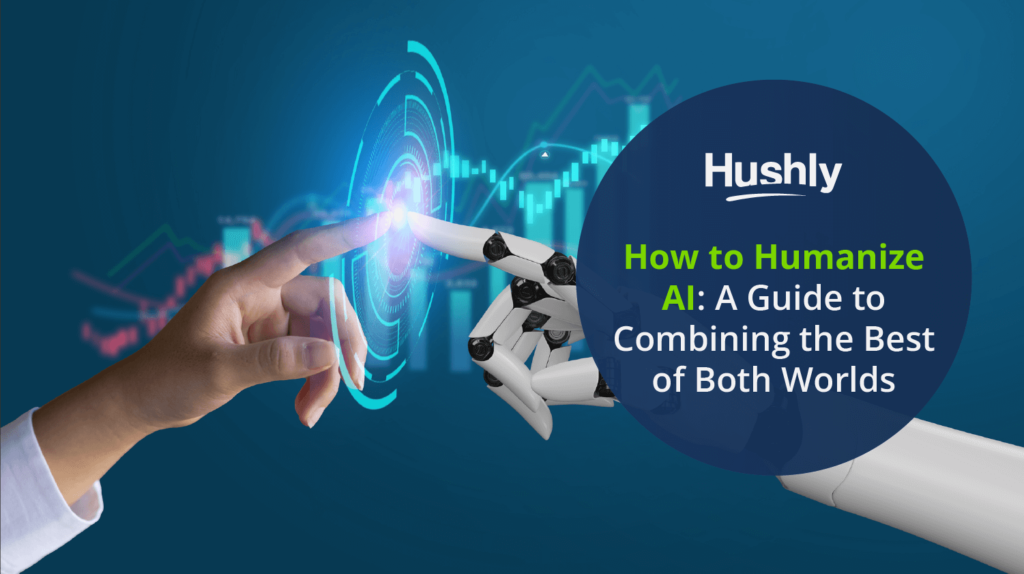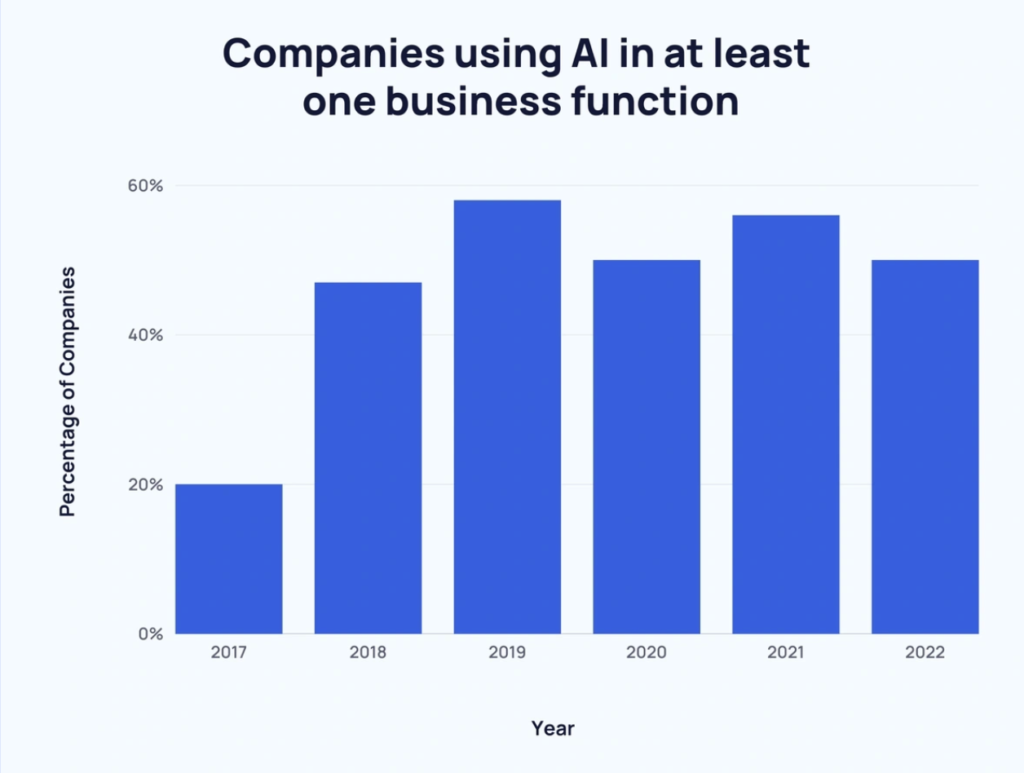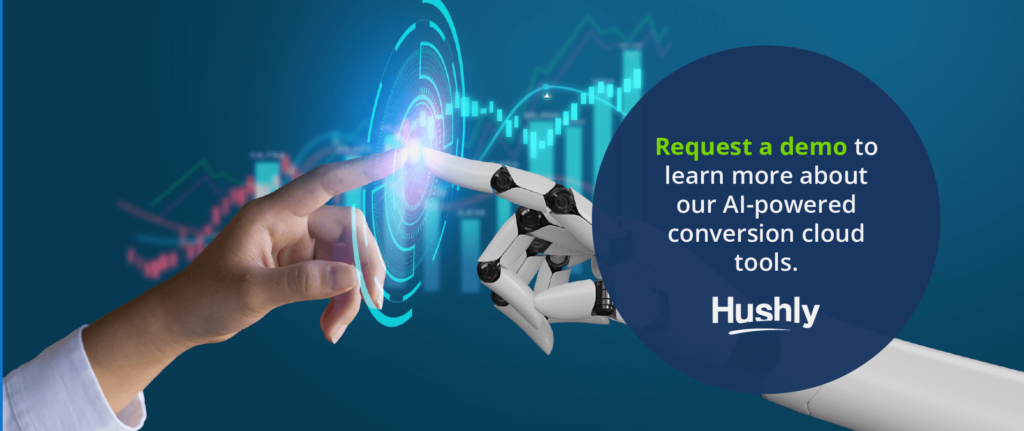Artificial intelligence (AI) has the power to scan and organize thousands of files. It can identify patterns and detect errors from piles of information. Yet, despite its unparalleled strengths, it still lacks human skills like understanding people’s emotions.
There’s no better human than humans, and AI can’t replace that unique spark you have.
However, it can support that spark to turn it into a fire. That’s why the most powerful partnership is when humans and AI work together.
We’ll dive into how to humanize AI so you can benefit from AI’s power without compromising your personal touch.

What Is the Hesitation with AI?
AI sometimes receives a slightly negative reputation. You probably have heard people ask, “Will AI replace humans?” That’s just one of several concerns.
Some common fears surrounding AI include:
- AI will replace essential jobs.
- AI will take away the human touch.
- AI will grow smarter than humans.
- AI invades people’s privacy.
Google’s head engineer, Ray Kurzweil, predicts AI will reach human-level intelligence by 2029. But we’re not there yet.
Some people are hesitant about AI because it’s still a relatively new technology, so people don’t fully understand it, its capability, and its potential downfalls.
Why AI Is Not Something to Fear
Artificial intelligence, while intelligent, does not contain many other human emotions. For example, it doesn’t feel ambitious. If AI isn’t ambitious, it will only act how others program it. Therefore, you don’t need to fear a Terminator reenactment in the next few years.
Will businesses begin replacing personnel with AI? Yes, in some cases they are. However, AI also opens new jobs or transforms people’s job descriptions. AI now performs those menial tasks no one wants to perform or struggles to find the time, like data entry when connecting with a new lead. That opens your schedule up for the tasks that are a priority, like personally nurturing that lead.
The advancement of AI has also brought changes in laws, especially privacy laws. We’re already moving away from many tactics used to mine data, like cookies. This opens the door to a more transparent future.
For instance, businesses now focus more time and effort on first-party data. This is information businesses directly gain from customers. That way, companies can understand and interact with their customers directly rather than purchasing and selling other people’s data on the market.
What’s most important to remember about the advancement in AI is AI’s use will depend on what people want. AI’s use will only go as far as customers are comfortable. Without customers, businesses would cease to operate, so keeping them happy is essential.
How Do Humans Help AI?
If AI is so great, why does it need humans at all?
Humans’ most significant strength is our capacity to feel emotion and gain personal experiences. AI can understand behaviors, but humans can understand emotions that may have triggered those behaviors.
Together, you can harness the power of analytics with the power of emotions, both cornerstones of marketing and conversion.
After all, you need to understand your audience before using personalized content to trigger an emotional purchase response.
5 Ways to Humanize AI in Your Business
Here are five tips to get you started with personalizing your AI experiences and content.
1. Remain Transparent
When you use AI, it’s important to remain transparent about how you use AI.
Society understands AI is part of most businesses. Globally, around 35% of businesses use AI in some way. When you add companies exploring AI adoption, that percentage jumps up to 77% of businesses using or considering AI.

Image from Exploding Topics
What people don’t trust is AI that functions where they can’t see it. These instances are what triggered fears of AI invading privacy.
People are less likely to balk away from AI interactions when you’re open and honest about AI. Even though there’s a general distrust around AI data collection, 83% of people say they would be willing to give personal information for personalized experiences.
What’s the difference?
When AI runs silently in the background, users become wary about what AI is doing and are less likely to respond positively. However, when you tell customers what AI is doing and how you use any information you collect, they trust AI more because it isn’t a faceless entity but has a purpose and is more human.
That way, you can use your data to improve customer experiences.
2. Personalize Interactions
Nearly everyone has experienced the frustration of emailing a company only to receive a canned response. There was no thought put into the response. It was the same response half the other customers received.
That is what happens when you let AI operate on its own.
To personalize your AI interactions, start by analyzing customer interactions. When AI can analyze individual questions and user behaviors, it can offer a personalized response for each customer. AI text humanizer through natural language processing can also adjust the language to sound more natural.
These responses will feel similar to talking with a human customer service agent.
3. Adjust the Tone
Generative AI has the potential to save you hours in content creation. It helps you create regular blog posts, social media posts, and even downloads for lead generation.
AI has a few tell-tale signs readers can identify that reveal AI-created content. Here are a few of the most common signs:
- Passive voice
- Longer sentences
- Complicated jargon
- Fluff
If you use AI to generate marketing content, consider having a human writer or editor look through that content. An AI humanizer can also help review the content. The writer can shorten sentences, turn them into active voice, and remove fluff to humanize AI text.
A human author can also infuse personality into the content and personal stories to humanize AI writing. Those small tidbits make the content more engaging.
4. Personalize Recommendations
When you spend hours creating marketing content, you want to give that content the best chance of appearing in front of the right audience. AI boosts that potential.
For example, through first-party data collection and analytics, Hushly’s personalization feature recommends further reading to website or landing page visitors. AI can detect patterns in the visitors’ behaviors to know what they might be most interested in reading about.
Because it’s first-party data, the person’s privacy remains intact as the company did not take the data from outside sources or share it with anyone outside the company.
5. Keep Humans in the Process
You must keep humans in AI experiences and marketing content. Remember that just because AI can perform a task doesn’t mean it should.
Sometimes, the best person for the job is a person.
Choosing AI tools that can include human intervention as much or little as you need is vital to keeping that human touch.
For example, having an AI chatbot can save you hours since a person doesn’t have to be available 24/7 to answer messages. However, you should also have a means for customers who still haven’t received the response they needed to contact a person.
The Human and AI Partnership You Need
Humanizing AI is more than making technology more relatable. It’s about helping AI and humans mutually achieve their maximum potential.
Together, you can strengthen each other’s weaknesses to maximize productivity.
The benefits will show through increased conversions and a higher customer satisfaction rate.
If you’re ready to join with AI to see these benefits yourself, we have the tools you need that work seamlessly with your human team.
Request a demo to learn more about our AI-powered conversion cloud tools.




